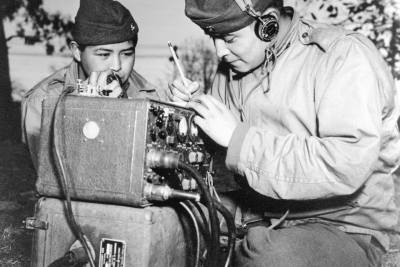
Although it’s crucial in battle, communication is worthless – even dangerous – if it’s intercepted by the enemy. Even messages created by complex “encryption machines,” which convert plain words into secret codes, can be hacked given enough time. Native Americans, however, speak complex languages that are virtually unknown outside their tribes. Since the First World War, they’ve used their unique linguistic abilities in the U.S. military’s signal corps as “code talkers,” translating sensitive communications into their language and transmitting them much faster than any machine. Even if enemies learned to decode Cherokee, Comanche, Navajo, Choctaw, or any of the other code-talker languages, they would still need to figure out the secret terms for words that didn’t exist in those languages. The Navajo word for “iron fish,” for instance, was used to describe submarines. A tank became “turtle” in Comanche.
The code talkers’ mission was so top secret they weren’t even allowed to share details with their loved ones. Their existence was finally made public in 1968 (23 years after the close of the war), but it took several decades before they recognized for their crucial role in winning World War II.
Picture Credit : Google
